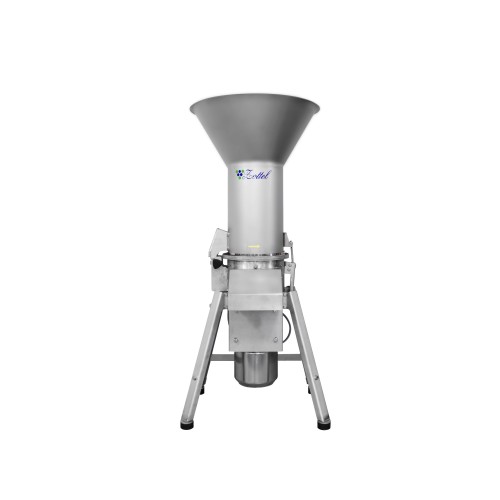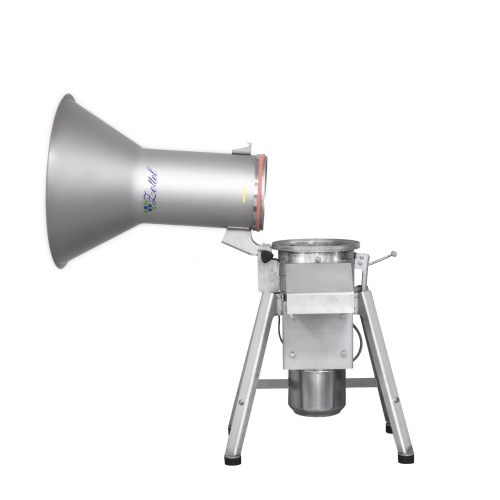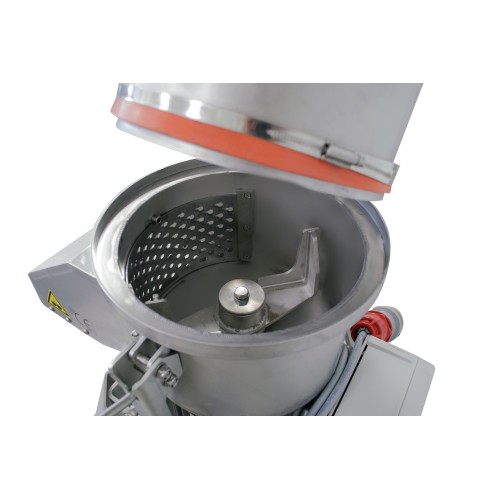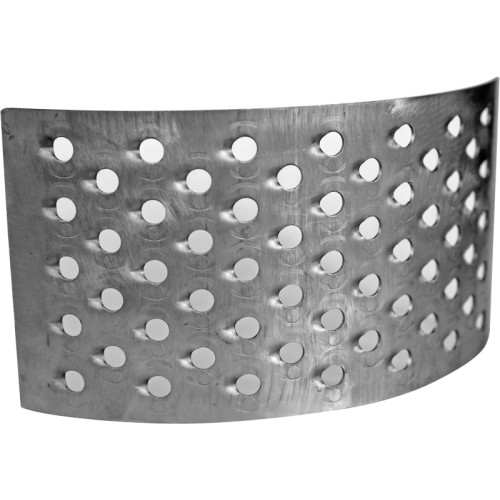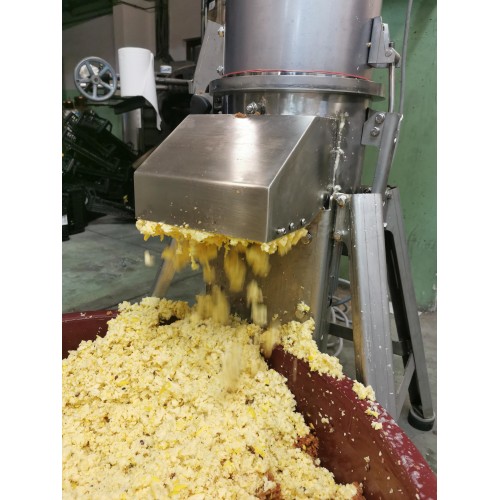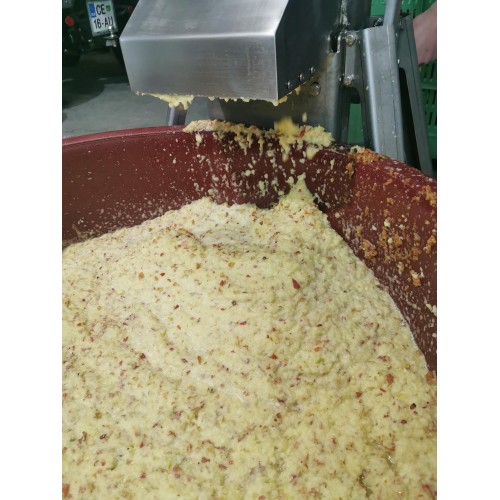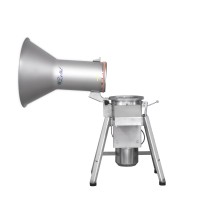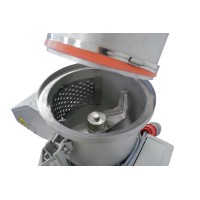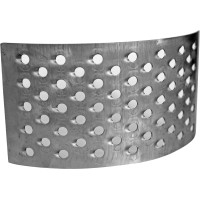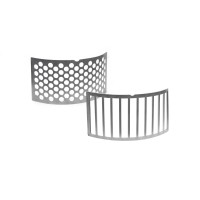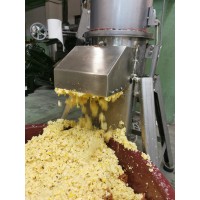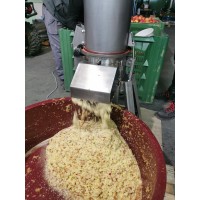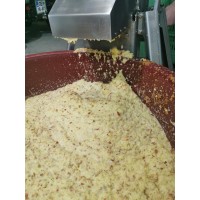Elektriline õunapurustaja ZOTTEL MMS55

DPD - Kohaletoimetamine: Latvia (1 tööpäeva) - 21.79€
Express Post - Kohaletoimetamine: Latvia (1 tööpäeva) - 61.09€
UPS Standard - Kohaletoimetamine: Latvia (2 tööpäeva) - 73.31€
Itella Smartpost - Kohaletoimetamine: Latvia (2 tööpäeva) - 87.97€
Itella Smartpost Parcel Locker - Kohaletoimetamine: Latvia (2 tööpäeva) - 87.97€
Latvian Post - Kohaletoimetamine: Latvia Prioriteetne (1–2 nädalat) - 87.97€
UPS Express - Kohaletoimetamine: Latvia (1 tööpäeva) - 87.97€
- Võimsus: 4200 kg/h
- Mõõtmed: 580 x 680 x 1510 mm
- Labidad: 3
- Kaal: 98 kg
- Elektrimootori võimsus: 5,5 kW
- Võrgupinge: 400V, 50Hz
- Pöörlemiste arv: 1450 p/min
- Valmistatud Sloveenias
See on mõeldud erinevate puuviljade, nagu õunte, pirnide, küdooniate, rabarberi, arooni, virsikute, aprikooside, viigimarjade ja köögiviljade, nagu porgandid, paprikad, peet, tomatid, sibulad ja mädarõikad, purustamiseks. Kivid tuleb enne purustamist eemaldada.
Purustuse peenust saab reguleerida, muutes labasid. Standardvarustus sisaldab kolme erinevat labakujundust, mida saab kasutada sõltuvalt puuvilja/köögivilja tüübist ja soovitud viljapudru paksusest.
Puu- ja õunapurustajat, tuntud ka kui puuveski, kasutatakse puuviljade purustamiseks peeneks massiks või pudruks. See protsess on oluline etapp erinevates puuviljatöötluse rakendustes. Siin on peamised puuviljapurustaja kasutusalad:
1. Mahla ekstraheerimine:
Eeltöötlus pressimiseks: Puuviljade purustamine pudruks lihtsustab nende pressimist ja mahla eraldamist. See on eriti oluline kõva tekstuuriga puuviljade, nagu õunte ja pirnide puhul.
Suurenenud saagikus: Puuviljade purustamine suurendab pindala, võimaldades rohkem mahla eraldada võrreldes terve puuvilja pressimisega. Kasutage Zotteli hüdropressi purustatud puuviljade kiireks, tõhusaks ja füüsilise pingutuseta pressimiseks.
2. Kääritamine:
Veini valmistamine: Veinivalmistamisel purustavad viinamarjad kattekihi, vabastades mahla ja viljaliha, mis on vaja kääritamiseks. See võimaldab pärmil efektiivsemalt ligi pääseda puuvilja suhkruteni.
Siidri tootmine: Sarnaselt veinile kaasneb siidri tootmine õunte purustamisega, et luua mass, mida saab kääritada alkohoolseks siidriks.
3. Mooside ja hoidiste valmistamine:
Tekstuuri ettevalmistamine: Mooside, tarretiste ja hoidiste valmistamiseks tuleb puuviljad purustada, et saavutada soovitud konsistents. Purustusprotsess lagundab puuvilja, muutes selle kergemini keedetavaks ja siledaks segamiseks.
4. Puu- ja köögiviljapüreed:
Sile konsistents: Puuviljade peeneks massiks purustamine on esimene samm püree valmistamisel, mida kasutatakse erinevates kulinaarsetes rakendustes, sealhulgas imikutoitudes, kastmetes ja magustoitudes.
5. Puuviljapõhised tooted:
Ühtlane segu: Toodetele nagu puuviljanahk, kastmed ja teatud kondiitritooted tagab ühtlane puuviljamass ühtlase maitse ja tekstuuri.
Kokkuvõttes on puuviljapurustaja kasutusel puuviljade lagundamiseks hallatavas ja töödeldavas vormis, hõlbustades mahla eraldamist, kääritamist ja erinevate puuviljapõhiste toodete loomist. See on oluline tööriist nii väikemahulistes kodustes operatsioonides kui ka suures mõõtkavas kaubanduslikes puuviljatöötlemise tööstustes.
Standardvarustus: roostevaba teraskonstruktsioon, 5,5kW mootor, 3 labakatet: ümmargused augud Ø8, ümmargused augud Ø14 ja nelinurksed augud 17x112mm.
Lisavarustus: roostevabast terasest alus h=160 mm.
